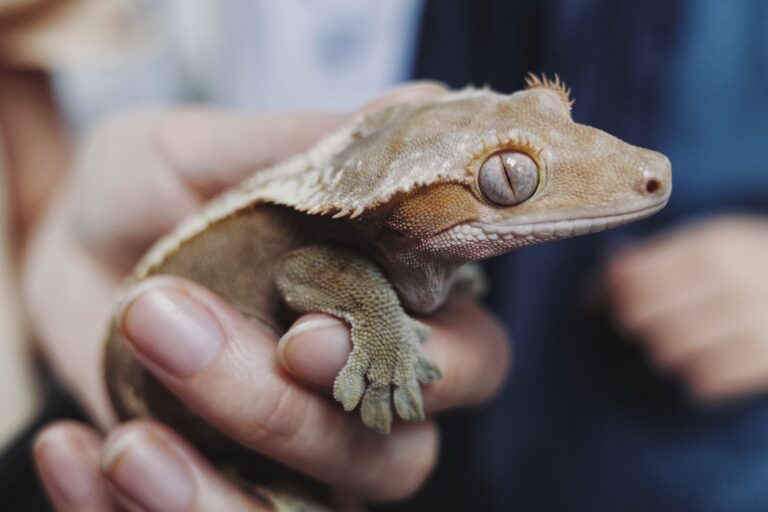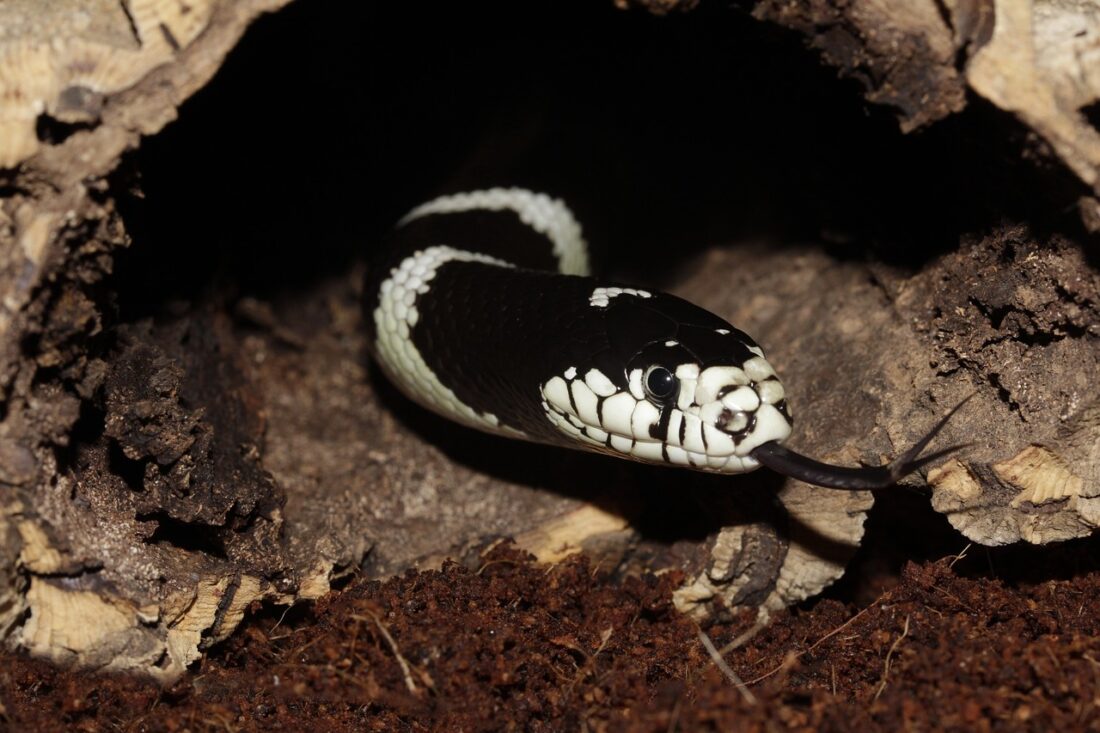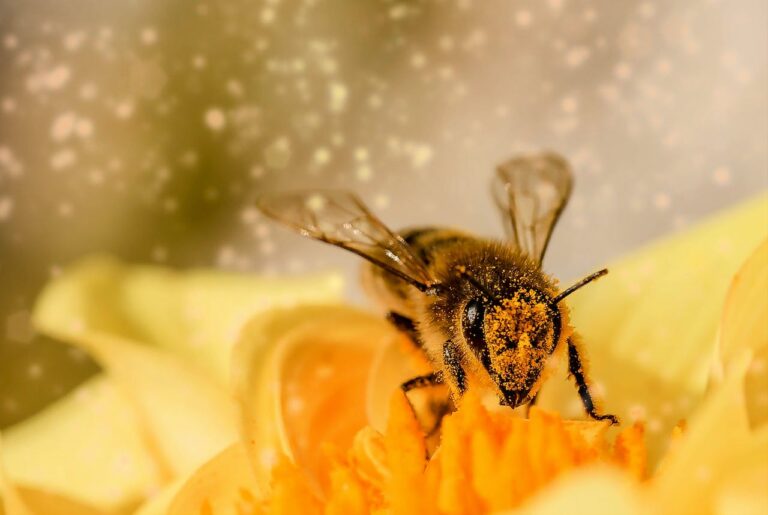5 Best Pet Monitor Lizards: Which One is Right for You?
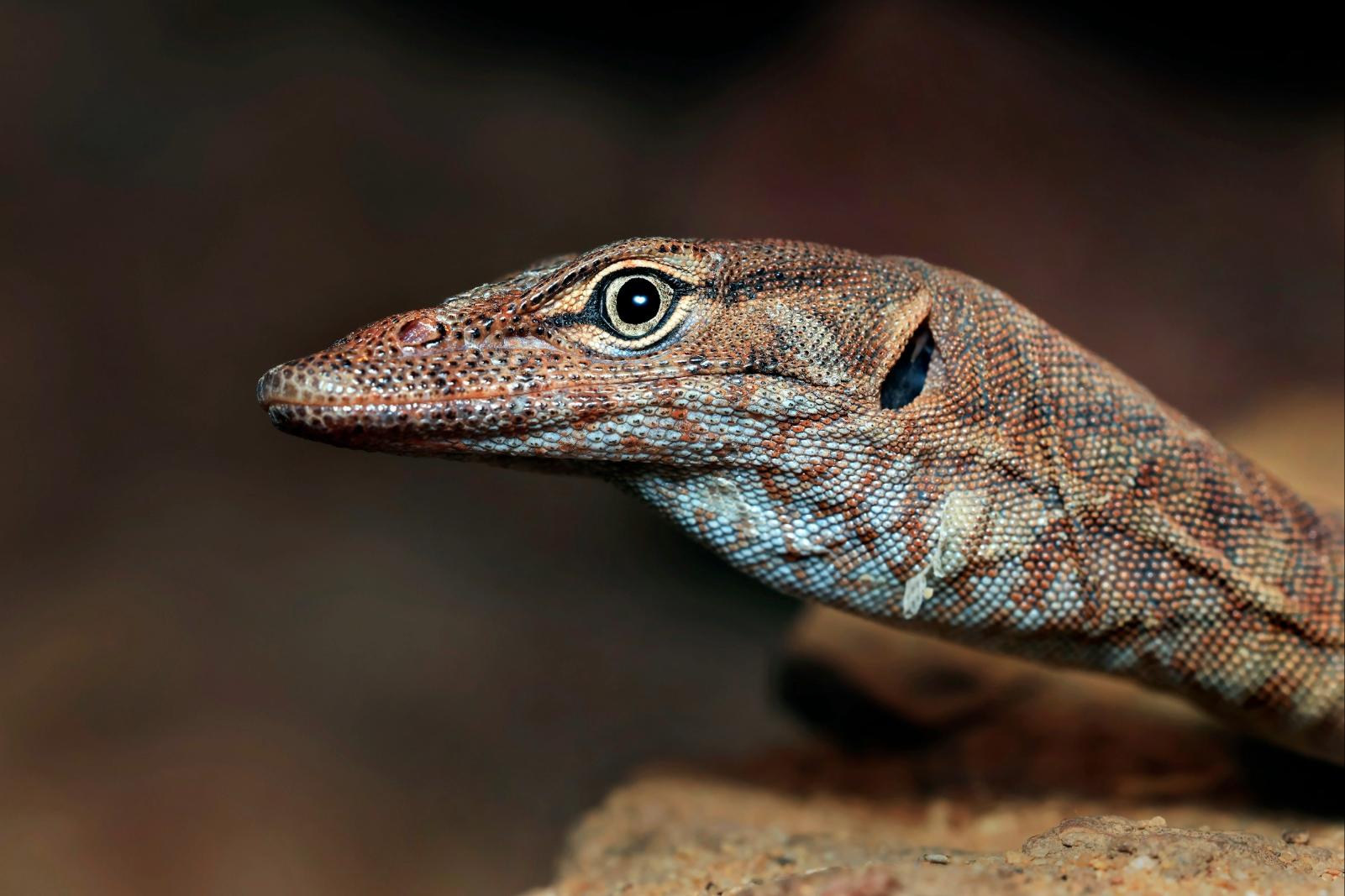
Introduction
Thinking about getting a monitor lizard as a pet? You’re not alone. More and more reptile enthusiasts are discovering how intelligent, curious, and interactive these incredible lizards can be!
However, with around 80 species of monitor lizards, it’s easy to feel overwhelmed by all the choices out there. Not all monitors are suitable for first-time monitor keepers. Many require highly specialized care, large enclosures, and experience handling powerful and potentially dangerous reptiles.

To make things simple, I’ve rounded up what I consider the best pet monitor lizards for beginner monitor keepers, based on factors like ease of care, hardiness, temperament, and size.
Note: These recommendations are based on my personal experience and conversations with many monitor lizard owners. They reflect my honest opinion and are meant to guide you in making an informed decision, not to replace hands-on experience or research. The monitors on this list should not be considered beginner reptiles, but they may be the best option for an experienced reptile keeper looking to get their first monitor.
What Makes a Good Pet Monitor Lizard?
1. Manageable Size
Size is the biggest factor for many keepers, and I would agree! Some monitors max out at 2 to 3 feet, while others can grow to 5, 6, or even 7+ feet. Larger species require large, sturdy enclosures and much more food.
A “good” pet monitor is usually big enough to be hardy and small enough to house safely and affordably. In my opinion, the ideal first time monitor should be 2 to 3 feet in total length, although there may be some exceptions (covered in this list). 2 to 3 feet is just large enough to have the unique monitor experience, but small enough such that the animal does not pose a dangerous threat to their owner.
2. Hardiness and Adaptability
Monitors have varying requirements and some are much hardier than others. Beginner-friendly monitors tolerate small mistakes better than delicate species. Good pet monitors typically eat consistently, have stable temperaments, handle environmental fluctuations better, and handle stress better. Fragile species or those needing extremely precise humidity/heat ranges are harder to manage.
As an extreme example, the crocodile monitor tends to be naturally skittish, and requires highly specialized care. Not to mention, they have the potential to be extremely dangerous and should almost never be kept by most people, let alone beginner reptile enthusiasts.
3. Lower Danger Level

Monitors are smart and powerful lizards with strong prey drives. As such, they have the potential to be dangerous, whether it be through their sharp teeth and claws, strong jaws, or powerful whipping tail. Your first monitor should be small enough so that it can not hurt you too badly. (still, there is always risk involved!)
In general, as the monitor gets larger, they get exponentially more dangerous, and have the potential to sever tendons and cause permanent damage with their strong jaws. As you can tell, I will not be sugarcoating the truth of owning these magnificent animals.
4. Reasonable Enclosure Requirements
All monitors need space, but some require massive custom enclosures or highly specialized setups. A more suitable pet monitor should thrive in an enclosure you can realistically build, not require extreme humidity systems, and not need a room-sized habitat.
5. Availability and Captive Bred Options
Choosing a species that is commonly captive-bred is better for the animal’s health, tameness, parasite load, and long-term care support. Wild-caught species often come with health issues and stress and should be avoided.
6. Calm, Trainable Temperament
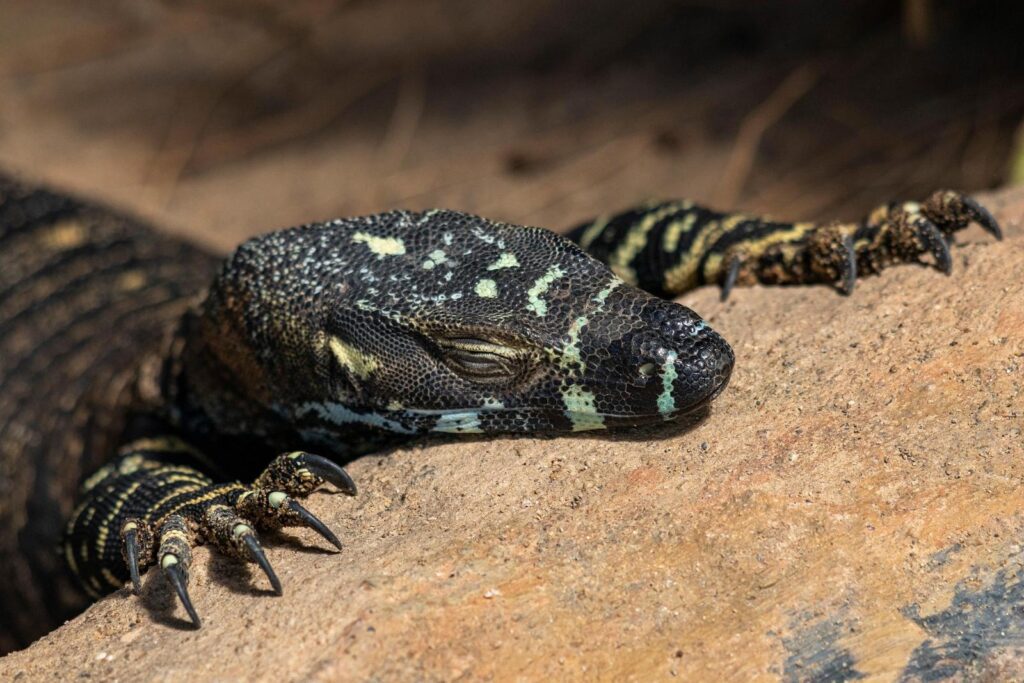
Monitor lizards are very intelligent, and some species tame down quickly while others stay defensive or flighty. Good pet monitor species typically tolerate handling better, show curiosity instead of fear, and can be target-trained.
7. Cost of Ownership
A good pet monitor should be affordable to keep long-term. Monitors aren’t just pricey to buy. They require constant spending on feeders, strong UVB and heat bulbs, and large enclosures that raise electricity costs. They also need upgrades as they grow, and reptile vets can be expensive. Choosing a species with moderate food needs and enclosure requirements makes ownership much more manageable.
8. Summary of What Makes a Good Pet Monitor Lizard
A good pet monitor lizard stays at a manageable size, is hardy and forgiving for newer keepers, and becomes relatively calm once it’s properly socialized. It shouldn’t be extremely dangerous, and ideally, it should be a widely kept, captive-bred species so you have reliable care information and support.
Most importantly, it needs to be realistic for you to house long-term. Keeping monitors is incredibly rewarding, but choosing the right species from the start sets you up for success!
The Best Pet Monitor Lizard Species List
1. Ackie Monitor
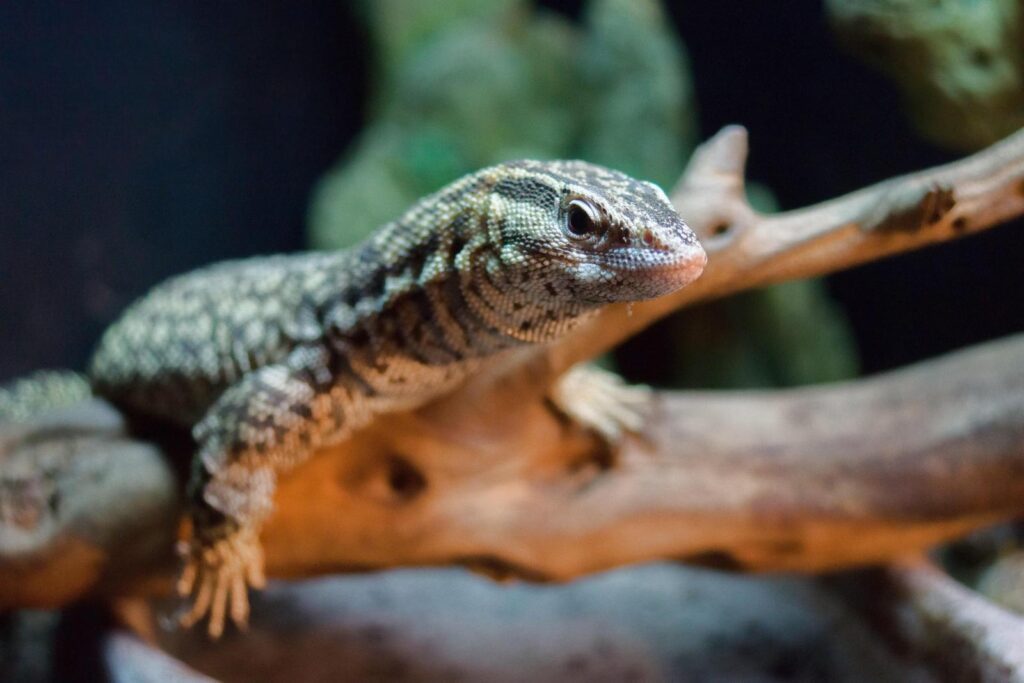
The Ackie monitor (Varanus acanthurus) is widely considered the best overall monitor lizard for beginners, and for good reason. They stay relatively small, usually around 24–30 inches, making them one of the few monitors that can realistically be housed long-term without needing a custom-built enclosure.
They’re also incredibly hardy and tolerate beginner mistakes far better than most monitors. Ackies are naturally curious, alert, and rarely aggressive, which means many individuals become confident around their owners with consistent, gentle handling. Because this species is commonly captive-bred, new keepers avoid the high parasite loads and poor temperaments seen in wild-caught monitors.
With proper husbandry, high basking temperatures, deep diggable substrate, UVB lighting, and enough space, ackies thrive in captivity and reward their owners with active, intelligent behavior. Their combination of manageable size, forgiving nature, and predictable temperament explains why they consistently rank as the top “starter” monitor.
2. The Odatria Subgenus
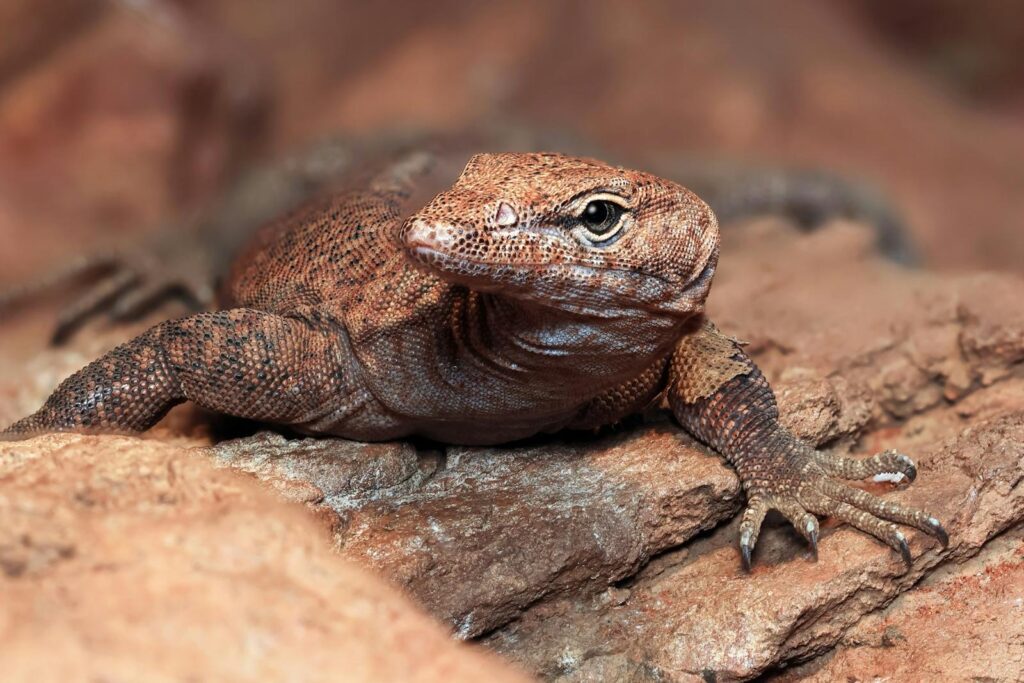
The Odatria subgenus includes a wide range of small to medium dwarf monitors, and while not all of them are naturally as handleable as ackies, many make excellent alternatives for keepers who want an active, intelligent lizard without the risks associated with larger monitor species.
Species such as the black-headed monitor, freckled monitor, kimberley rock monitor, and pilbara rock monitor tend to be more alert and sometimes more flighty, but they are generally not dangerous and often adapt well to life in captivity when provided proper space and enrichment.
Although many Odatria lizards are naturally more observant than cuddly, plenty of individuals can become tolerant of handling and develop a level of trust with their owners when worked with consistently and respectfully. For someone looking for a dynamic, engaging monitor species beyond the popular Ackie, the broader Odatria subgenus offers several rewarding options that blend manageable size with fascinating behavior.
3. Mozambique White Throat Monitor
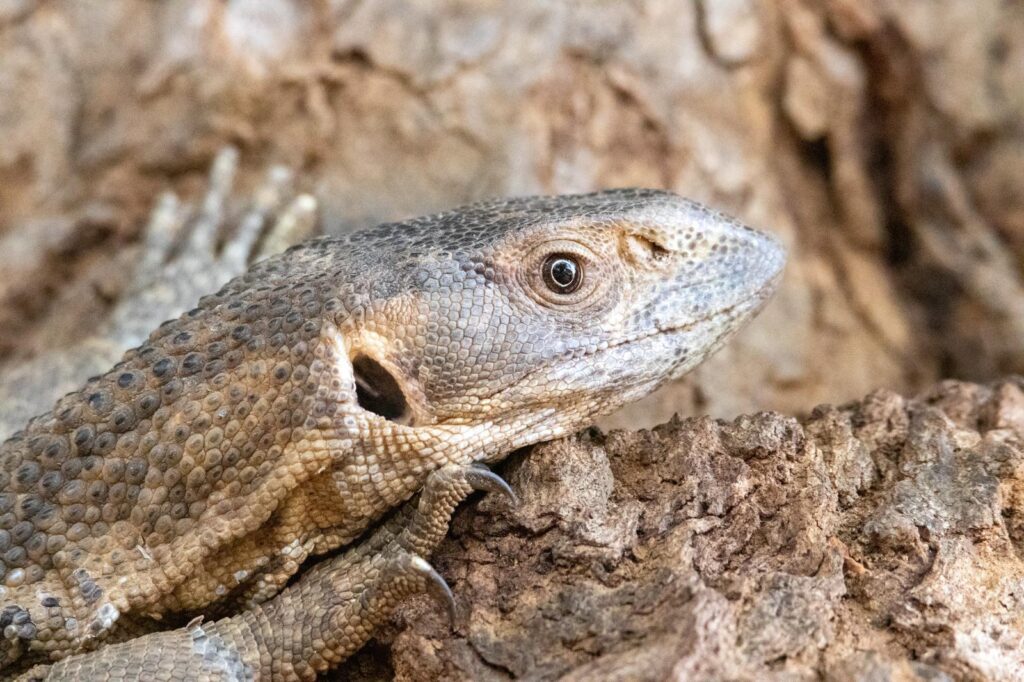
The Mozambique white-throated monitor locale (Varanus albigularis) is a smaller and more approachable version of the typical white-throat, usually topping out around 3.5 to 4.5 feet.
They’re hardy, active, and curious lizards, with a naturally calm and inquisitive personality that can make them surprisingly tolerant of handling, similar in temperament to black-throat monitors, though they still need time and patience to build trust.
Young monitors do best on a diet of insects like crickets and roaches, while adults can enjoy occasional whole prey such as eggs or chicks. They thrive in enclosures with deep, diggable substrate, climbing structures, secure hides, UVB lighting, and warm basking spots. Their intelligence and interactive nature make them rewarding for first-time monitor keepers who are ready to invest in proper care.
While they’re more of a challenge than an ackie monitor, the effort can be very rewarding, offering a more engaging and interactive pet experience for dedicated owners.
4. Sumbawa and Celebensis Asian Water Monitor Locales
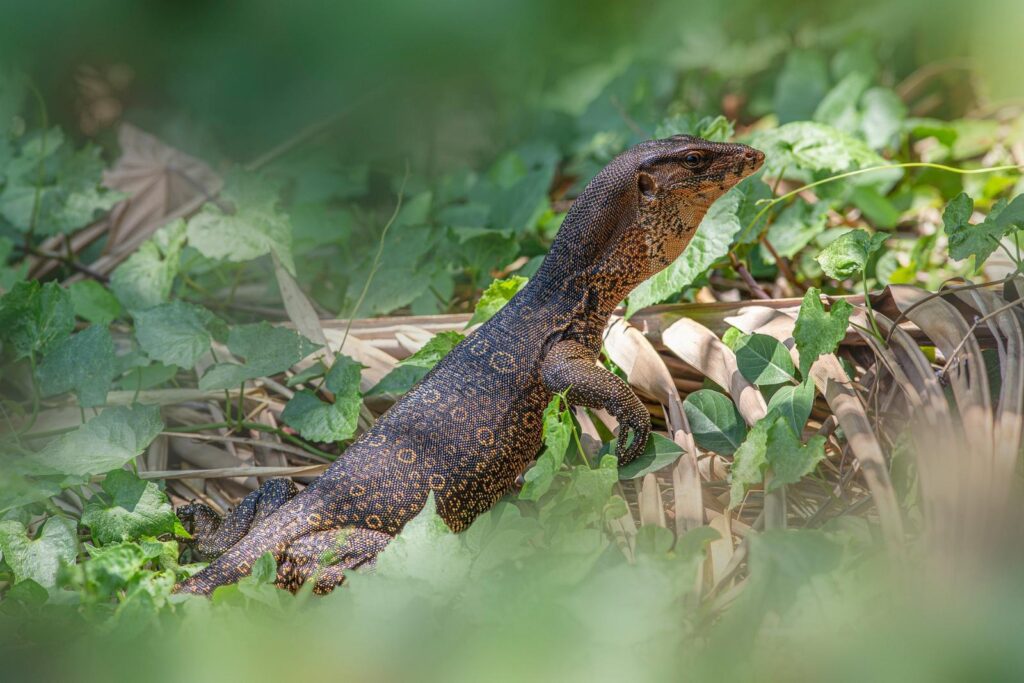
Ever dreamed of owning an Asian water monitor but hesitated once you realized how huge they can get? Fear not! Sumbawa and Celebensis locales are perfect options for beginner monitor keepers, offering the friendly temperament of classic water monitors in a much smaller, more manageable size. No need for a giant enclosure with a water feature that takes up half a room!
These locales usually max out around or under 4 feet (with exceptions!), offering easier handling for new monitor lizard owners who want a gentler, interactive pet without feeling overwhelmed by sheer size. Sumbawa and Celebensis water monitors are known to socialize well when raised from a young age, quickly rewarding consistent care with playful, “dog-like” curiosity that suits new keepers looking for an engaging first monitor experience.
While keeping any aquatic monitor means providing a large water feature, the enclosure and husbandry requirements for these two locales are far less extreme, making it easier for beginners to set up proper habitats and maintain high standards. Add in their visually stunning pattern and coloration, and it’s easy to see why Sumbawa and Celebensis monitors are widely considered exceptions to the intimidating water monitor category.
They deliver all the personality and beauty of larger Asian water monitors in petite, friendly packages that fit right at home with keepers new to the world of these amazing lizards.
Be cautious when sourcing a small locale Asian water monitor, and make sure you’re getting a genuine Sumbawa or Celebensis monitor. If you’re not careful, you could end up with a full-sized classic Asian water monitor, which could exceed 7 feet as an adult male.
5. Captive-bred Savannah Monitor (controversial)

Here’s my somewhat controversial opinion: I believe that with enough research (talking to experienced owners, reading every guide available online, and joining reptile communities), savannah monitors (Varanus exanthematicus) can be successfully raised and kept as rewarding pets.
A lot of the negative reputation around their temperament and long-term care comes from inexperienced keepers. Too often, people make impulsive purchases of wild-caught, dehydrated, and parasite-infested animals, then shove them into tiny 20-gallon enclosures without proper vet care. Unsurprisingly, those monitors often end up stressed or unhealthy.
That said, if you’re willing to put in huge amounts of time and effort, a savannah monitor CAN be a highly rewarding pet. They do have specific needs: large enclosures with digging space, humid burrows, careful temperature management, and a diet that’s mostly insects (which can be challenging as they get to a large size). They’re also prone to obesity, so proper feeding is essential.
Savannah monitors can make great pets because they are intelligent, curious, and tolerant of handling when socialized. They can form bonds with their keepers, display interesting behaviors like digging and exploring, and are resilient once their environment and diet are properly managed.
One very important note: ONLY get a captive-bred individual. They’re much, much harder to find, but some reputable and highly experienced breeders are active in Facebook groups and other reptile communities. Starting with a healthy, captive-bred savannah monitor makes all the difference in setting yourself and your monitor up for success.
I believe that in several years time, the negative stigma surrounding savannah monitors will decrease greatly.
Frequently Asked Questions
1. What is the Best Pet Monitor Lizard From Australia?
It can be argued that the best pet monitor lizard from Australia is the Ackie monitor (Varanus acanthurus). Ackies are relatively small, hardy, and manageable compared to many other Australian monitors. They’re also intelligent and can become quite interactive with consistent handling. Their calm nature, small size, and relatively simple care requirements (compared to other monitor lizards) make them an excellent choice for beginner to intermediate monitor keepers.
2. What is the Easiest Monitor Lizard to Care For?
Generally, the easiest monitors to care for are the smaller species, particularly those in the Odatria subgenus, such as Ackie monitors, Kimberley rock monitors, and Pilbara rock monitors. Their smaller size makes them more manageable to house long-term, easier to handle, and less dangerous, making them ideal for beginner or intermediate monitor keepers.
3. What is the Most Common Pet Monitor?
The Savannah monitor is probably the most commonly kept monitor lizard. They’re often cheap ($40-70) and look adorable as babies, which makes them tempting for first-time reptile keepers. Unfortunately, many beginners pick up wild-caught individuals at reptile shows on impulse, without realizing how large and demanding these lizards can become.
4. Can You Have Monitors as Pets?
Yes, you can keep monitor lizards as pets, but they’re not your typical beginner reptile. Some species, like ackie monitors or small Odatria monitors, are more manageable in size, temperament, and care requirements. Larger species, like Lace or Black-Throated monitors, can grow several feet long and need very large enclosures, specialized diets, and a lot of attention. With proper research, preparation, and commitment, many monitor lizards can make fascinating and rewarding pets.
Conclusion
Choosing the right monitor lizard as a pet can feel daunting, but it doesn’t have to be! By focusing on manageable size, temperament, hardiness, and realistic enclosure needs, you can find a species that matches your experience and lifestyle.
For most beginner-to-intermediate keepers, species like the Ackie monitor, certain Odatria dwarf monitors, or smaller locales of Asian water monitors offer a perfect balance of intelligence, curiosity, and approachability. Even species with more specific care requirements, like the savannah monitor, can be rewarding if you’re willing to invest time, research, and proper husbandry.
Remember, every monitor lizard is an individual. Patience, consistent care, and respect for their natural behaviors will pay off with a healthy, active, and engaging reptile companion. Choose wisely, prepare thoroughly, and enjoy the unique experience of keeping one of nature’s most fascinating lizards!
Which monitor did we cover that was your favorite? Leave a comment down below and feel free to ask me any questions! 🙂

